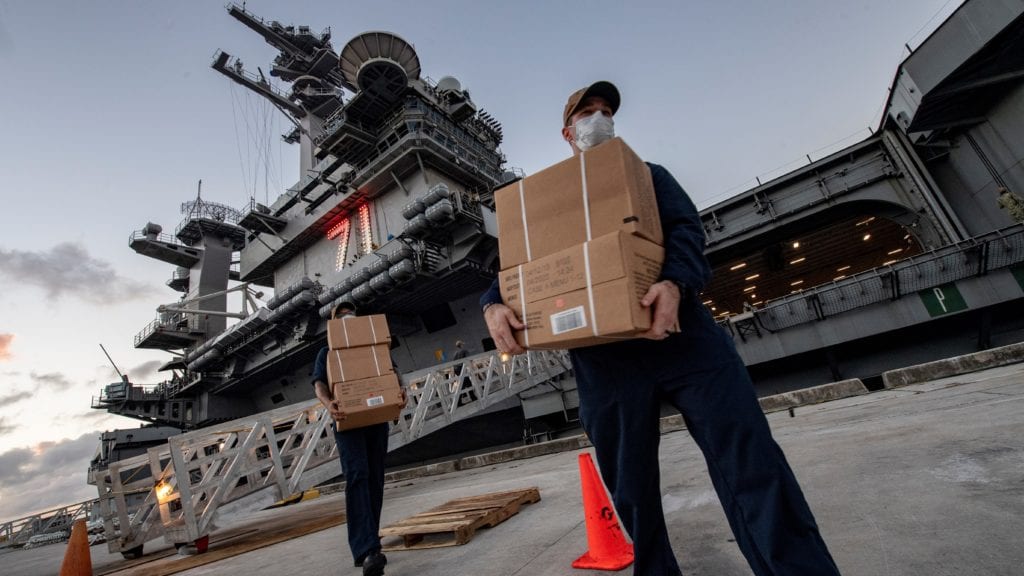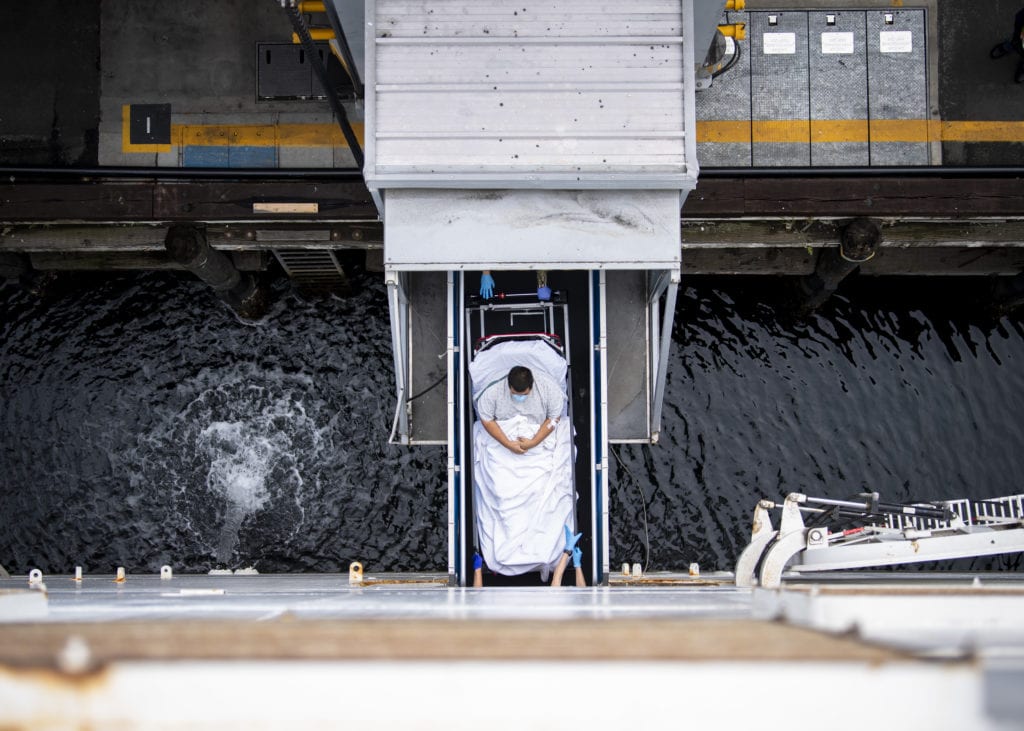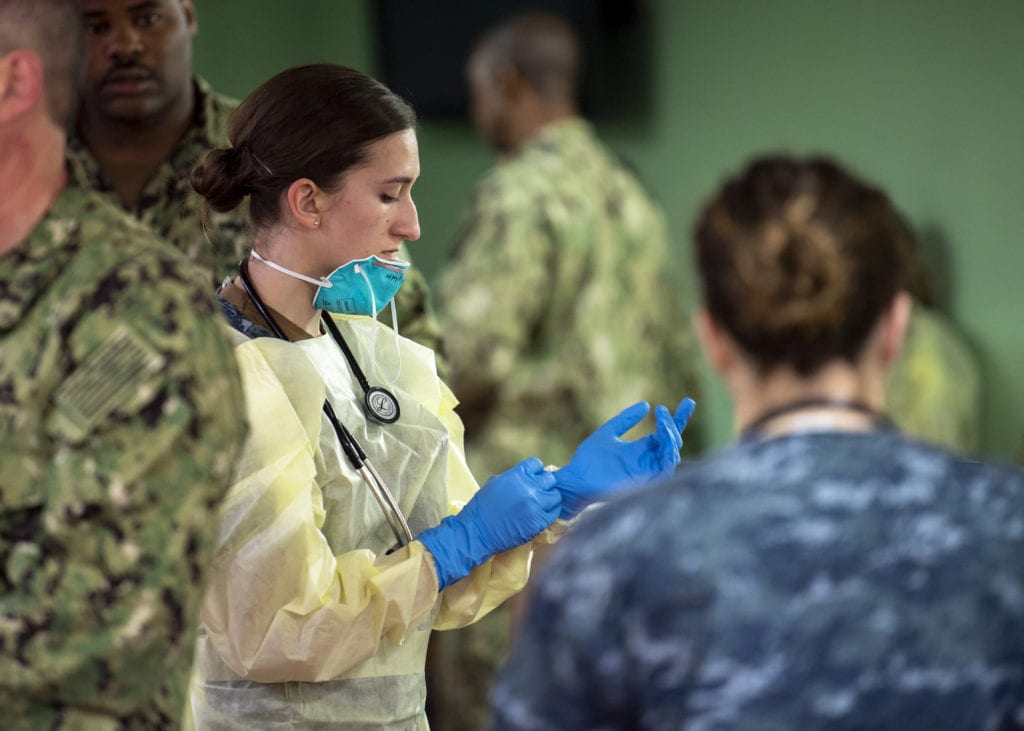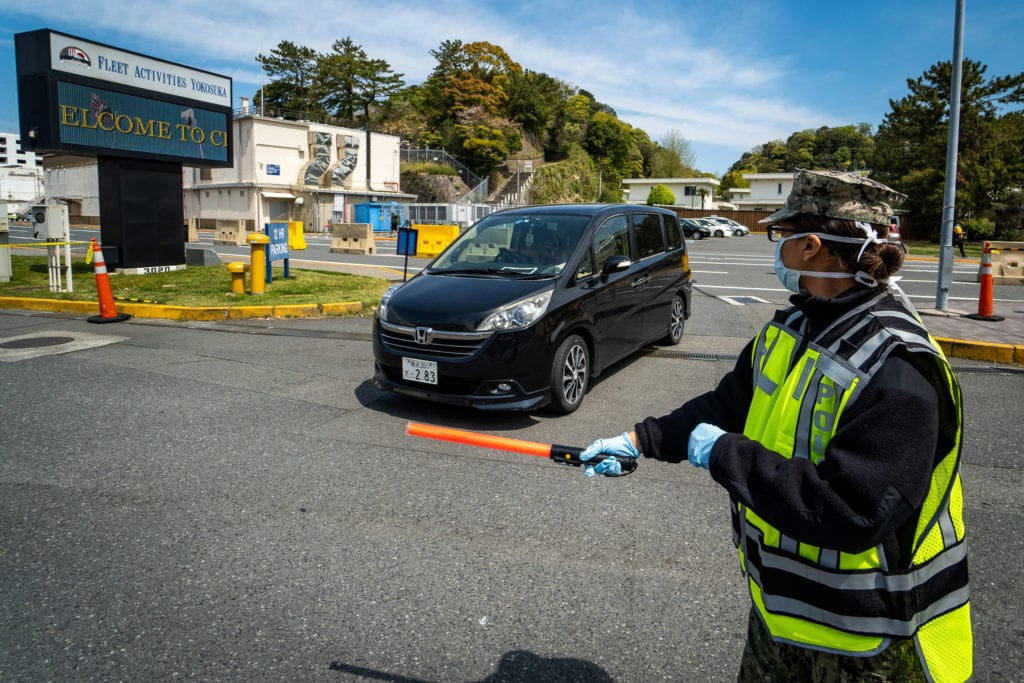
The novel coronavirus has been a stunning and tragic disrupter of U.S. sea service operations — both major and routine, traditional events as well as long-planned operations.
Shortly after the World Health Organization declared COVID-19 a pandemic on March 11, the effect on America’s military started to come into sharper focus.
Check out the digital edition of the May Seapower magazine here.
See: At War With the Virus — A Timeline
By April 16, the U.S. Navy had reported 1,224 novel coronavirus cases. Most of those, 983, were Sailors, including 655 from the USS Theodore Roosevelt — the ship that is the hot spot for the virus. Another 134 cases were civilians, 53 dependents and 54 contractors.
A total of 13 Sailors, 13 civilians, three dependents and six contractors had been hospitalized. Also by April 16, 200 had recovered, the Navy said.
On April 13, the Navy said that the first active-duty Sailor had died — a Roosevelt crew member — joining three civilian employees and two Navy contractors who perished.

As of April 16, the U.S. Marine Corps reported 340 COVID-19 positives among uniformed Marines, dependants, civilians and contractors.
The U.S. Coast Guard had 90 cases but 31 had recovered by that date.
Also by April 15, the hospital ship Mercy, docked in L.A., had seven test positive and sent into isolation. More than 100 had been in contact with those who tested positive there.
Spotlight on the Teddy Roosevelt
By mid-April, four aircraft carriers — the cornerstone of the Navy’s ability to project power forward — had at least one Sailor on board test positive for the viral infection. The USS Nimitz and USS Carl Vinson, both based in Bremerton, Washington, and the USS Ronald Reagan in Japan all were in port when their COVID-19 cases were discovered.
But nowhere was the outbreak more acute or visible to the world than on the fourth aircraft carrier, the Theodore Roosevelt, which put into port at Guam. That carrier became the first ship at sea to report a case.

The then-captain of the Theodore Roosevelt, Brett Crozier, who later tested positive and went into quarantine himself, drew attention to his Sailors’ plight with a March 30 letter to Navy leadership. The letter was leaked and ran the next day with a story in the San Francisco Chronicle, drawing worldwide media attention.
As outcry grew over the fate of the Roosevelt’s crew, then-acting Navy Secretary Thomas Modly announced April 2 the removal of Crozier from his command. Modly then flew to Guam, where he would compound the controversy in a speech to the crew that included profanity-laced criticism of Crozier. The speech stirred more criticism of the Navy and Modly, who submitted his resignation on April 7.
By April 15, it was reported that Chief of Naval Operations Adm. Mike Gilday, after prelimary findings from a follow-on report of the affair, was considering reinstating Crozier.
As of April 16, 94% of the Theodore Roosevelt’s crew had been tested; 3,919 were negative with the 655 positives. Five were hospitalized in Guam, with one in intensive care. Of the 4,800 crew, 4,059 Sailors had moved ashore.

Concern for the Submarine Fleet
Of special concern is the health of the ballistic missile submarine force — the maritime leg of the nuclear triad with bombers and ground-based missiles — and other subs.
Crew members were undergoing enhanced medical screenings and 14-day isolation before beginning training or deployment aboard a sub, Gilday announced on March 24.
As of press time for Seapower in mid-April, no cases had been reported within the submarine force, but the Navy and all other services, starting in late March, were not reporting COVID-19 cases broken down by specific sectors of the fleet to protect operational security.
Wargame Foreshadows a Real Pandemic
Three months before the outbreak was detected in China, 50 experts participated in a wargame, Urban Outbreak 2019, that simulated the rapid spread of a disease.
The scenario involved a nation of 21 million people hit by a virus that led to respiratory failure and death.
The wargame generated a debate among “players” over the need for mass-enforced quarantine, like the U.S. population faces today. The players split between those who espoused quarantine as a reality and those who believed it would drive the infection underground and spread the disease faster.
The game’s results were scheduled to be discussed at a workshop in March, but like so many events in and out of the military these days, the real-life COVID-19 risk forced officials to postpone the workshop until
at least this summer.
- Shall We Play a Game? Winning Isn’t the Point, Experts Say - April 5, 2023
- U.S. Goal: Maintaining Extended Presence in Arctic’s Harsh Environment - April 4, 2023
- Joint, Combined Exercise Shows Marine Littoral Regiment Idea is on ”Right Track’ - February 24, 2023




